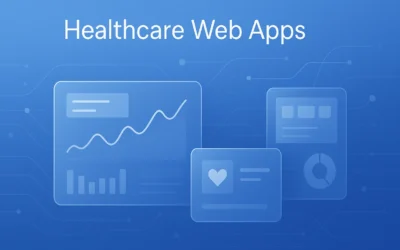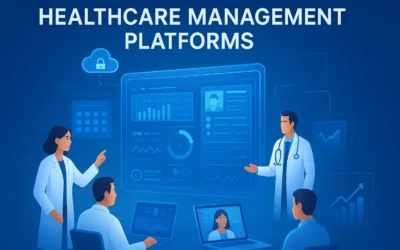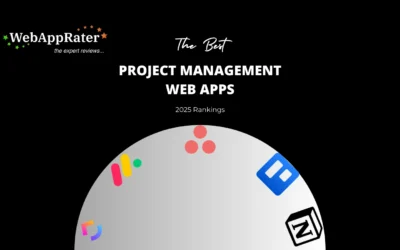In this blog post, we’ll dive into the nitty-gritty of downtime, explore its true cost, and uncover how managed IT services can be your superhero, preventing business disruption.
The True Cost of Downtime
- Lost Revenue: Imagine your e-commerce website crashing on Black Friday. You’re not just losing potential sales; you’re driving customers straight into the arms of your competitors. Every minute of downtime translates to potential lost revenue.
- Productivity Drain: Your employees can’t get any work done when your systems are down. This idle time can snowball into massive productivity losses, which can be especially painful for service-based businesses.
- Reputation Damage: In the age of social media, news about your downtime can spread like wildfire. A tarnished reputation can take years to rebuild, and some customers might never come back.
- Data Loss: If your data backup systems aren’t up to par, you risk losing valuable data during downtime. This could be customer records, financial data, or intellectual property.
- Compliance Fines: Many industries have strict regulations regarding data security and uptime. Downtime can lead to non-compliance and hefty fines.
Now that we understand the high cost of downtime let’s explore how managed IT services can be your trusty shield against it.
Managed IT Services to the Rescue
Managed IT services are like having a team of IT experts at your beck and call, ready to fend off downtime dragons. They offer a range of benefits that can save your business from the headaches and heartaches of unplanned disruptions.
- Proactive Monitoring
Picture this: A small glitch in your system goes unnoticed until it becomes a full-blown crisis. With managed IT services, constant monitoring is the name of the game. They keep a watchful eye on your IT infrastructure, catching issues before they spiral out of control.
- Faster Issue Resolution
When downtime strikes, time is of the essence. Managed IT services have the expertise and tools to resolve problems quickly. They know where to look and how to fix it, minimizing the impact on your business.
- Robust Cybersecurity
Cyberattacks are a leading cause of downtime. Managed IT services implement robust cybersecurity measures to protect your data and systems from malicious actors. They stay up-to-date with the latest threats and ensure your business stays one step ahead.
- Scalability
As your business grows, so do your IT needs. Managed IT services can scale their services to match your requirements, ensuring you always have the right support in place.
- Disaster Recovery
Natural disasters can strike at any moment. Managed IT services help you create a solid disaster recovery plan, so you can bounce back quickly in the face of adversity.
- Predictable Costs
Forget about surprise IT expenses. Managed IT services often work on a predictable, monthly subscription model, making budgeting a breeze.
- Focus on Core Business
With IT experts handling the technical side of things, you can concentrate on what you do best—running your business. This frees up your time and resources for strategic growth and innovation.
The Managed IT Services Roadmap
Step 1: Assess Your Needs
The first step is to assess your current IT infrastructure and identify potential vulnerabilities. This might involve a comprehensive IT audit. Determine which areas need the most attention and where managed IT services can provide the greatest benefit.
Step 2: Choose the Right Provider
Not all managed IT service providers are created equal. Do your research and select a provider that aligns with your business goals, has a solid track record, and offers the services you need.
Step 3: Customized Solutions
Work with your chosen provider to develop a customized IT solution tailored to your business. This might include 24/7 monitoring, cybersecurity measures, data backup solutions, and disaster recovery plans.
Step 4: Implementation
Once your plan is in place, the provider will implement the necessary changes and systems. This might involve upgrading hardware, installing new software, or reconfiguring existing systems.
Step 5: Ongoing Support
Managed IT services don’t stop at implementation. They provide ongoing support, ensuring your IT infrastructure remains in top-notch condition. This includes regular updates, maintenance, and troubleshooting when issues arise.
Step 6: Disaster Preparedness
Together with your provider, create a detailed disaster recovery plan. This should outline steps to take in case of an outage or cyberattack, ensuring minimal disruption to your business operations.
Step 7: Regular Review
Your business is dynamic, and your IT needs will evolve. Schedule regular reviews with your managed IT services provider to assess the effectiveness of your IT strategy and make necessary adjustments.
Conclusion
By proactively monitoring your IT infrastructure, resolving issues swiftly, fortifying your cybersecurity, and offering scalability, they not only save you money but also provide peace of mind. With managed IT services at your side, you can focus on growing your business, knowing that the tech side of things is in capable hands.

































